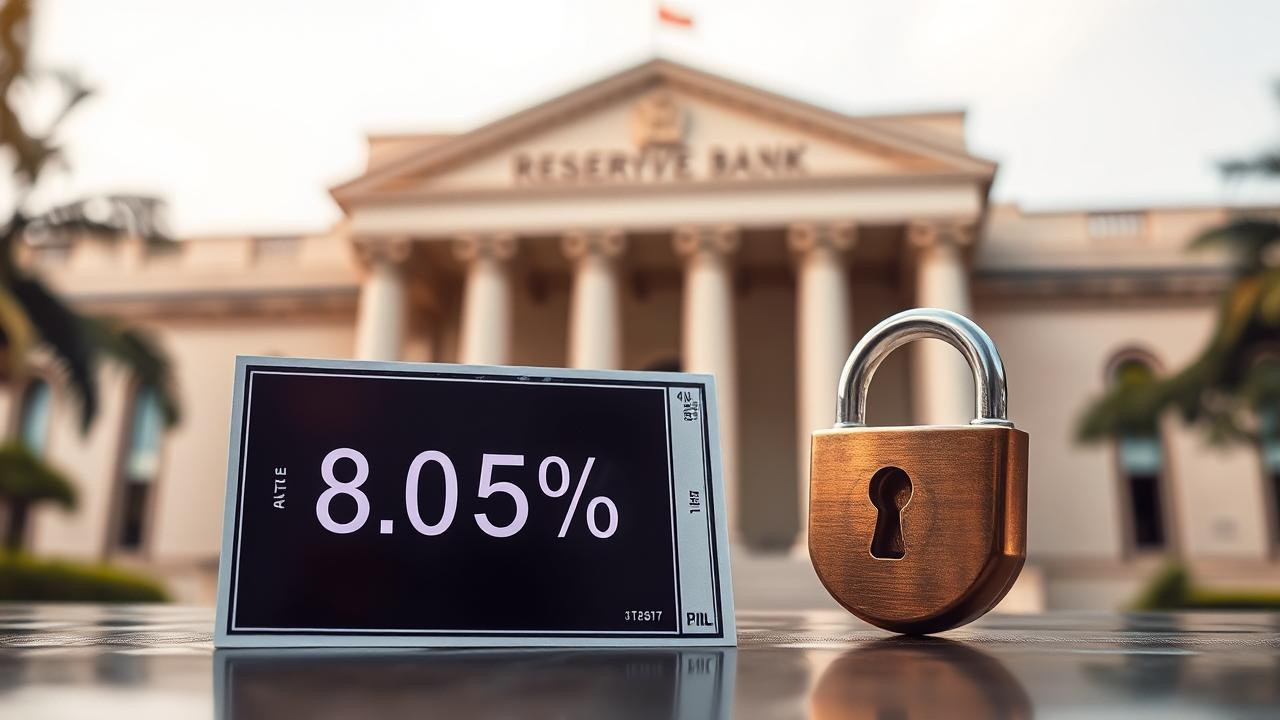Reserve Bank of India keeps the Floating Rate Savings Bonds interest rate at 8.05% for July to December 2025. This rate is higher than many bank fixed deposits. These bonds offer safety and good returns. The rate is linked to National Savings Certificate and recalibrated every six months. These bonds are good for long-term conservative investors seeking steady income.
Riding the Wave: Are RBI Floating Rate Bonds the Right Choice for You?
For those of us who prefer our financial lives to be a little less…rollercoaster and a little more…lazy river, the world of investing can sometimes feel a bit daunting. The constant fluctuations, the jargon, the potential for risk – it can all be overwhelming. But what if there was a way to dip your toes into the market without getting completely soaked? Enter: the RBI Floating Rate Savings Bonds, or FRSBs. They’re generating a buzz, and for good reason.
Forget the static world of fixed deposits for a moment. These bonds, issued by the Reserve Bank of India, offer a dynamic approach to returns. Their interest rate isn’t set in stone; instead, it “floats” with the prevailing market rates. Right now, that translates to an attractive 8.05% return, making them look pretty appealing, especially compared to some of the more conservative options out there. But are they really the safe haven they seem to be? Let’s dive a little deeper.
What Makes RBI Floating Rate Bonds Tick?
The magic behind these bonds lies in their connection to the National Savings Certificate (NSC) rate. The interest rate on FRSBs is benchmarked to the NSC rate plus a spread, which means it’s regularly adjusted. This is where the “floating” comes in. If the NSC rate goes up, so does your return on the bond, and vice versa. This offers a degree of protection against inflation eating away at your returns, a significant advantage in the current economic climate. 
Think of it this way: you’re not locking yourself into a fixed rate for the entire term. You’re riding the wave of interest rates, potentially benefiting from upward trends.
Floating Rate Bond vs. Fixed Deposits and PPF: A Quick Comparison
Traditional fixed deposits (FDs) offer a guaranteed interest rate for a specific period. While this provides certainty, it also means you could miss out if interest rates rise. The Public Provident Fund (PPF), another popular option for conservative investors, also offers a fixed rate and comes with tax benefits. However, the PPF has a longer lock-in period than the FRSBs.
So, where do FRSBs fit in? They offer a middle ground. They’re generally considered safer than market-linked investments but offer the potential for higher returns than FDs, particularly when interest rates are on the upswing. They also provide greater liquidity than the PPF, as they can be prematurely encashed (though with a penalty in some cases, depending on the investor’s age bracket).
Who Should Consider Investing in Floating Rate Bonds?
The RBI Floating Rate Savings Bonds are particularly well-suited for:
* Conservative investors: If you prioritize capital preservation over high-risk, high-reward investments, these bonds could be a good fit.
* Those seeking inflation protection: The floating rate mechanism helps to mitigate the impact of inflation on your returns.
* Individuals looking for a relatively safe and liquid investment: While not as liquid as a savings account, FRSBs offer better liquidity than some other long-term savings options.
* Senior citizens: These bonds often offer attractive premature withdrawal options for senior citizens, making them a potentially useful tool for retirement planning.
A Word of Caution
While FRSBs are generally considered low-risk, it’s essential to remember that they are not entirely risk-free. The interest rate can fluctuate, and if interest rates fall, your returns will also decrease. Also, premature encashment before the lock-in period ends can attract penalties.
It’s also important to understand the tax implications. The interest earned on FRSBs is taxable, just like interest earned on fixed deposits.
Beyond FRSBs: Diversifying Your Portfolio
While floating rate bonds offer a compelling option, remember that diversifying your investment portfolio is crucial. Don’t put all your eggs in one basket. Consider spreading your investments across different asset classes, such as stocks, bonds, and real estate, to mitigate risk and potentially enhance returns. You might also consider exploring other government-backed schemes like Sovereign Gold Bonds, discussed further on our [investment options page](/investment-options).
The Bottom Line: Are RBI Floating Rate Bonds Right for You?
The RBI Floating Rate Savings Bonds present an interesting proposition for conservative investors seeking a balance between safety, inflation protection, and liquidity. With their attractive current interest rate and floating-rate mechanism, they can be a valuable addition to a well-diversified portfolio. However, before investing, it’s crucial to carefully consider your individual financial goals, risk tolerance, and time horizon. By weighing the pros and cons, you can make an informed decision and determine whether these bonds are the right wave for you to ride.







